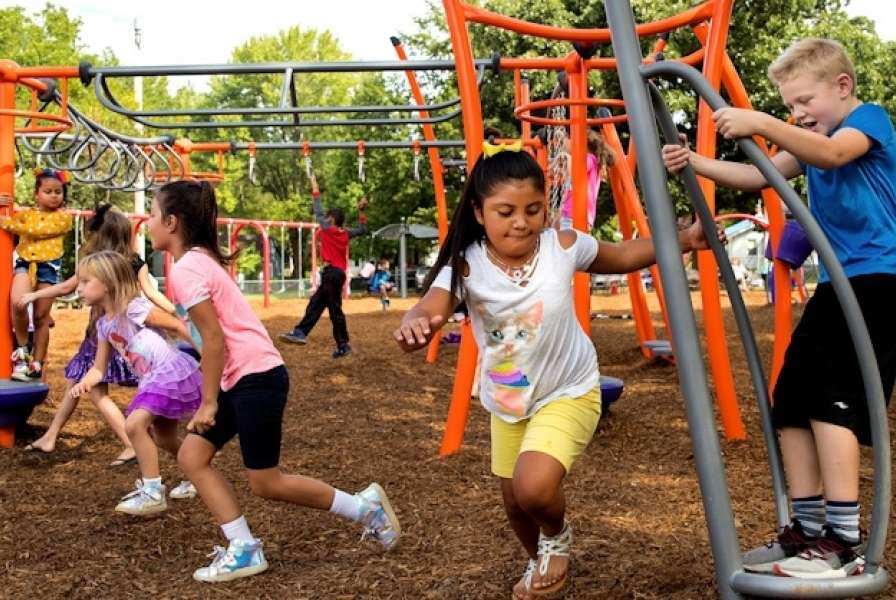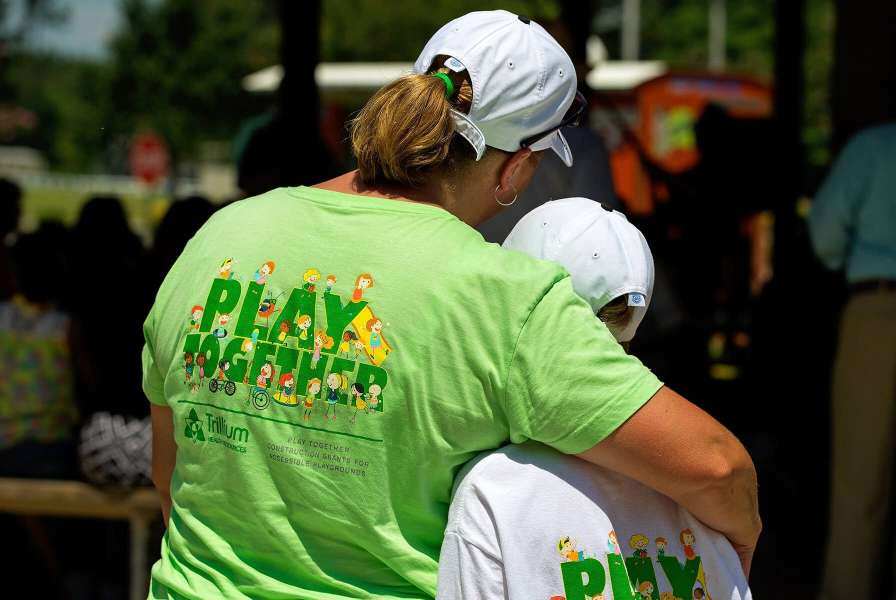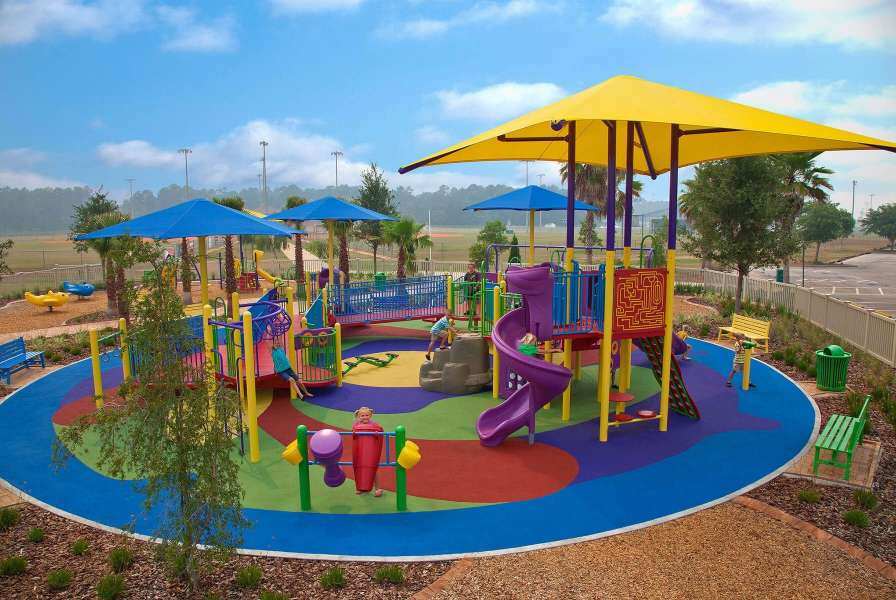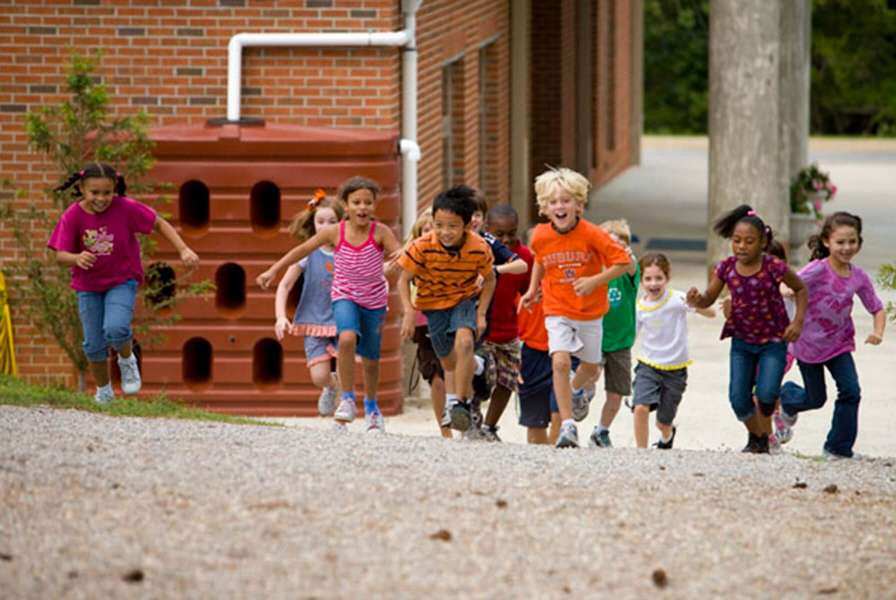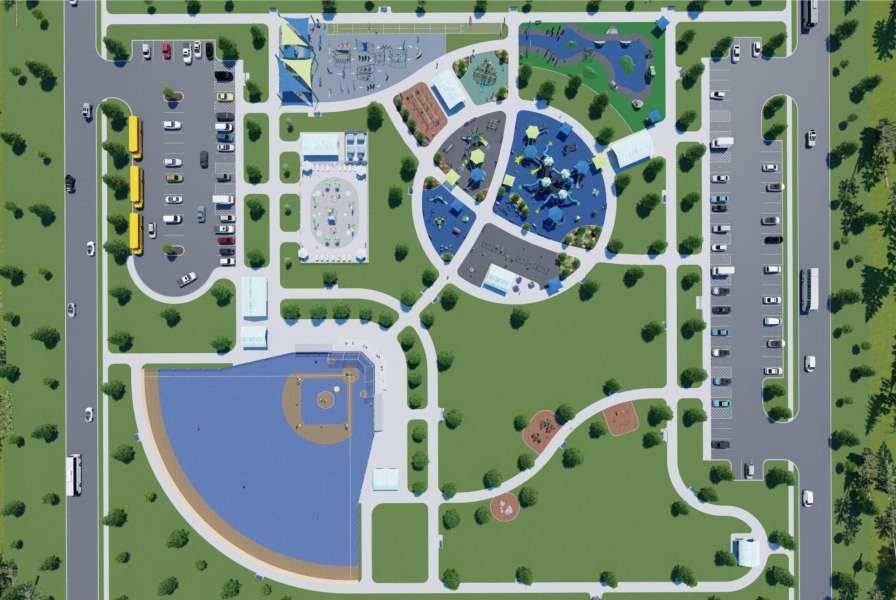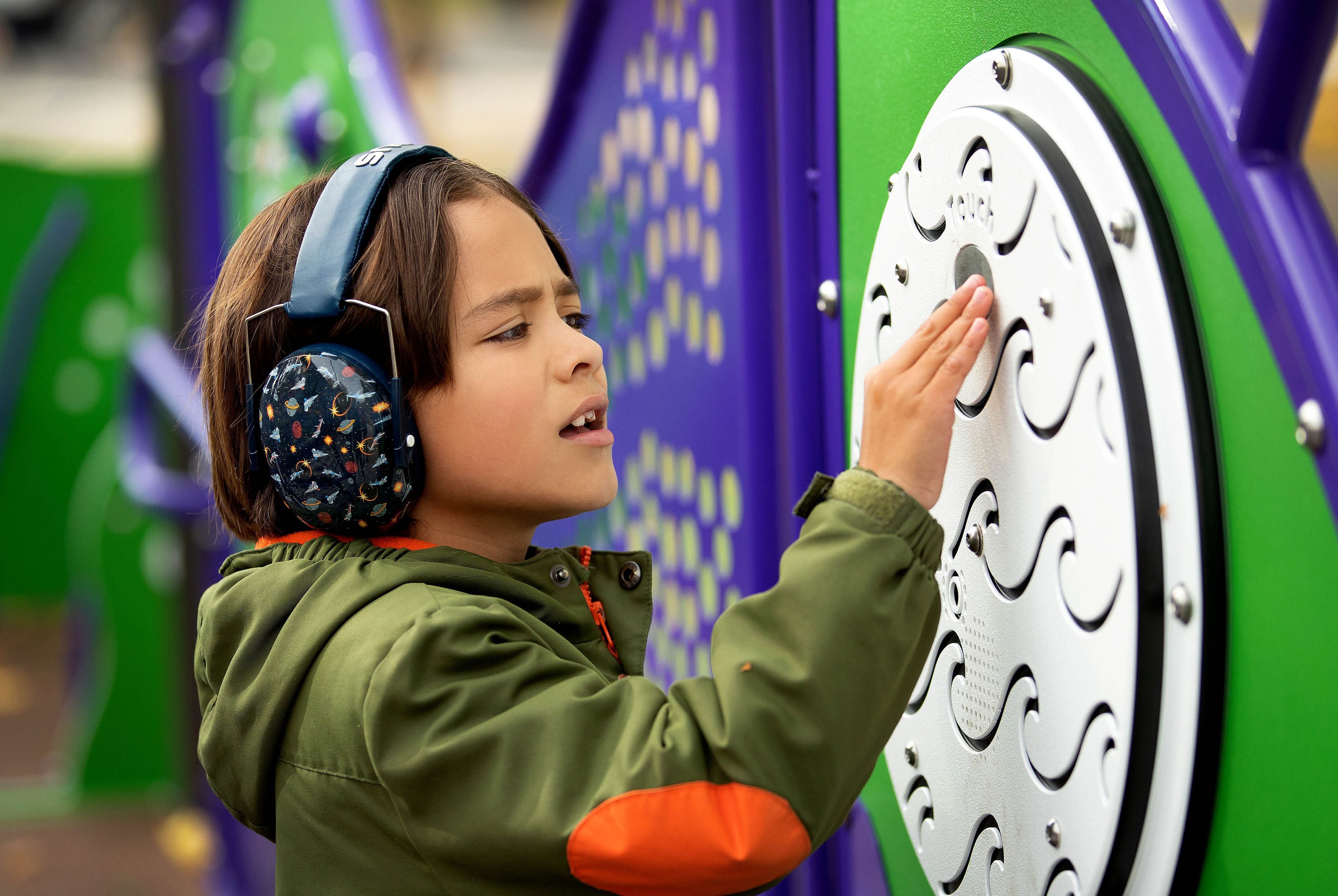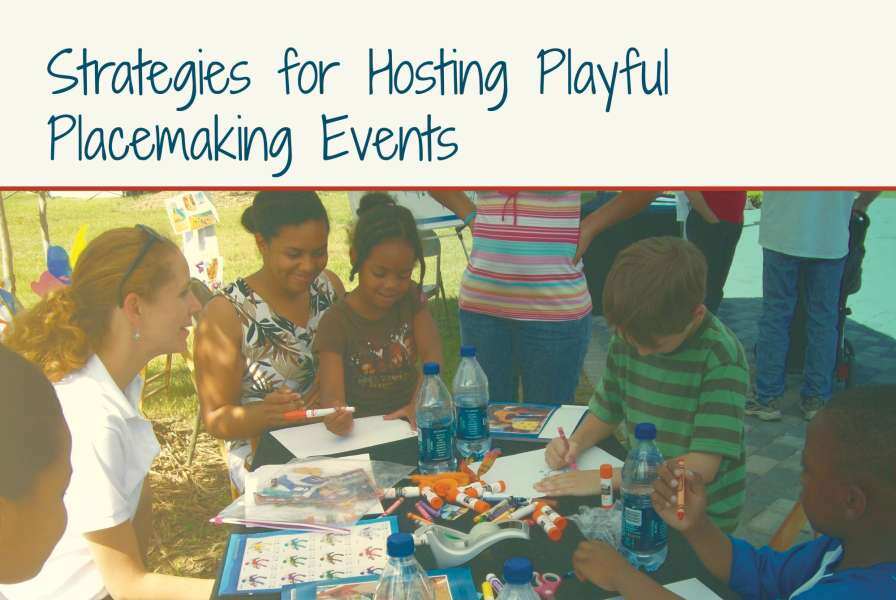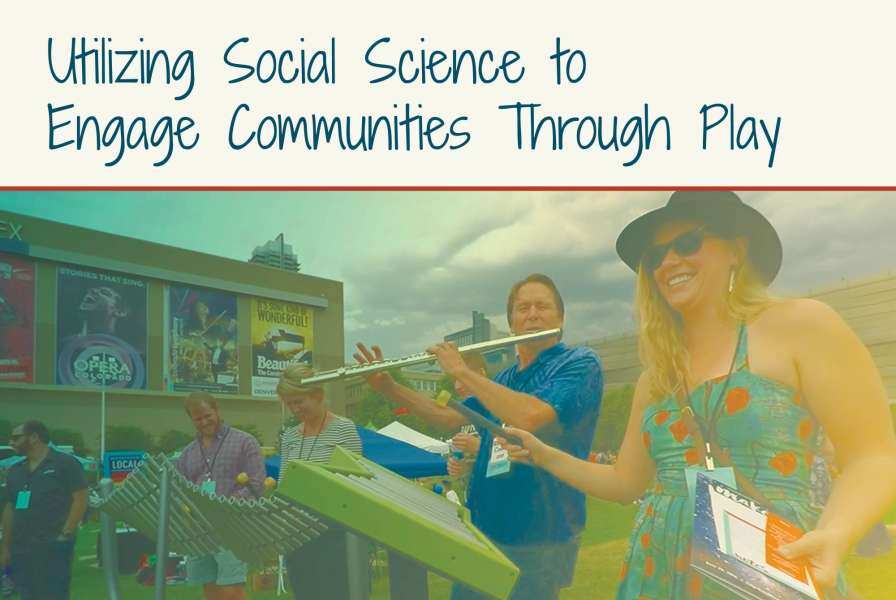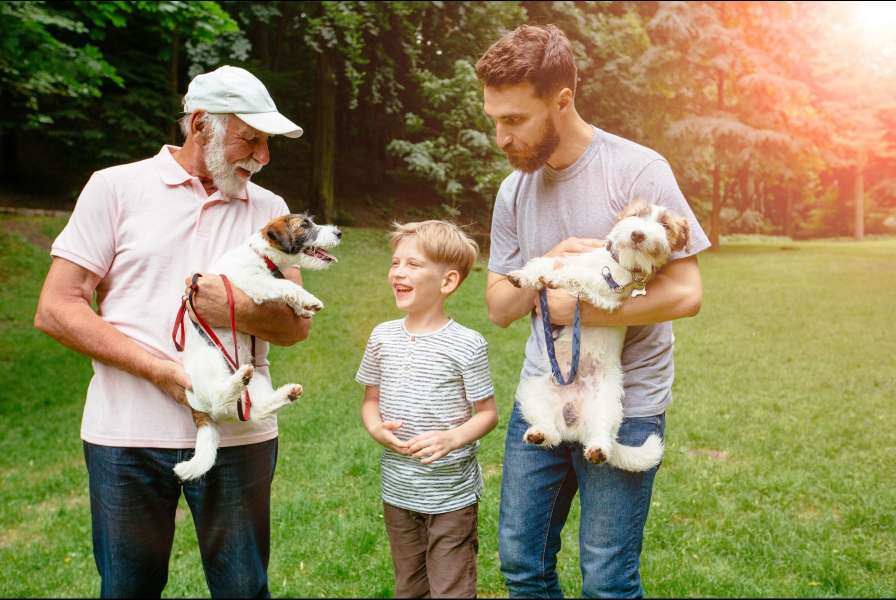Early childhood playgrounds can provide young children with a wealth of activities to aid in their overall development. Manufactured equipment, including systems with slides, climbers, tunnels, playset panels, and decks can be augmented with natural materials and loose parts to create an inspiring developmental space.
The early childhood play structure should contain a variety of activities that are age appropriate and varied. Good early childhood playsets are not scaled-down models of playsets for older children, they contain activities that focus on the skills of a developing preschooler, their physical skills, spatial orientation, judgment, and how they interact with their surroundings, as these are all very different from skills demonstrated by older children. The layout of a play area should be based on the ages and stages of the children who will use it. Preschoolers enjoy climbing so a variety of climbers is essential. Climbing structures, slides, sand play areas, as well as activity panels that encourage interaction, movement, and use of the senses, are all beneficial pieces of equipment for early childhood playgrounds. Adding shade, or playset roofs to aid in sun protection is also a good idea for early childhood play areas.
Once you have selected your early childhood play equipment, including a variety of slides, interactive play panels, tunnels, and climbers, give some thought about how to incorporate nature and loose parts into the space to increase the opportunities at your early childhood playground.
Natural materials themselves can have play value, and can provide unstructured and creative experiences that augment early childhood play equipment and playsets. Natural materials can incorporate topographical references, for instance, small hills and mounds, for children to play on. Early childhood play spaces may also use trees, shrubs and gardens to provide sensory stimulation –the sounds of birds, the smell of flowers, the sight of textural materials all provide value for early childhood play areas. Natural features can also be used between play zones to create dividers, direct traffic flows, and provide beauty to the early childhood play space.
Nature can also provide loose parts for play, which are important in the preschool years. The term “loose parts” describes any type of found objects, toys, and/or natural materials that children can move and manipulate during their play. Unlike early childhood play equipment, they are unanchored, easily moved, and fun for children to incorporate into their games and play. Preschool children recently observed at play used large magnolia leaves that had fallen from a nearby tree for “plates” and they sat in a circle describing what food was on their plate, as they passed them around for inspection. In another play observation, acorns were used as “money,” and the children playing with a store panel were exchanging them for imaginary goods, as well as for articles made from other loose parts.
By providing nature and natural loose parts in addition to early childhood play sets, owners of early childhood playgrounds can increase the functionality and imaginative outlet of their play space.
